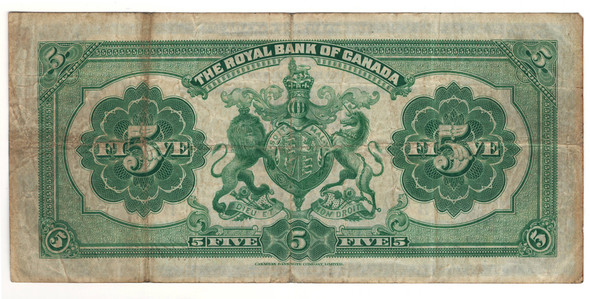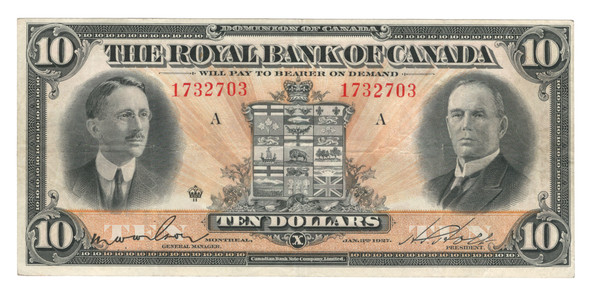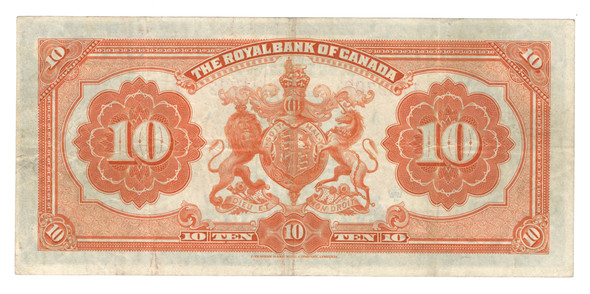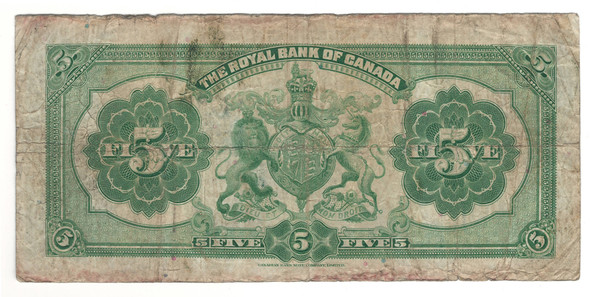The Royal Bank of Canada
The Royal Bank of Canada
Today Canada’s largest bank, the Royal Bank of Canada was founded in April 1864 in Halifax Nova Scotia to finance the fishing and lumber industries as a co-operative institution, it received its charter 5 years later in 1869 with an authorized capital of 1 000,000 dollars under the name of Merchant’s Bank. This changed in 1901, when the bank chose to change its name to the more distinctive “Royal Bank of Canada”. Under this name, the Bank entered a decade of rapid growth moving its head office to Montreal, and expanding throughout Canada, the USA and the Caribbean. Throughout the first world war, takeovers of two other banks, the Trader’s Bank of Canada and the Quebec Bank lead the RBC to become Canada’s second largest bank. By 1929 just before black Friday, the RBC had grown into Canada’s largest financial institution, and was distributing record profits to its shareholders. Business returned to normal by 1935, and the bank returned to its pre-crash growth rates which have been maintained since. Banknotes under the name of Royal Bank were first produced in 1901 in 5, 10, 20, and 50-dollar denominations. The last issue, a 5-dollar bill dates to 1943. The Royal Bank of Canada issued an extensive series of notes for the British West Indies, including Antigua, Barbados, British Guyana, Dominica, Grenada, St. Kitts, St Lucia, Trinidad and Jamaica. Many bear themes relating to ships and southern commerce.
- Product
- Qty in Cart
- Quantity
- Price
- Subtotal
-


Canada: 1913 $5 Royal Bank of Canada Banknote
CAD $200.00Canada: 1913 $5 Royal Bank of Canada Banknote Reference: 630-12-04CAD $200.00 -


Canada: 1913 $5 Royal Bank of Canada Banknote PMG VF20
CAD $400.00Canada: 1913 The Royal Bank of Canada $5 Banknote Signature: C.E. Neill, H.S. Holt Condition: PMG VF20CAD $400.00 -
On Sale


Canada: 1927 Royal Bank of Canada $10 Banknote VF30
Now: CAD $288.88Was: CAD $400.00Canada: 1927 Royal Bank of Canada $10 VF30 Reference: 630-14-08Now: CAD $288.88Was: CAD $400.00 -


Canada: 1933 $5 Banknote - The Royal Bank of Canada
CAD $900.00Canada: 1933 $5 Banknote - The Royal Bank of Canada Reference: 630-16-02CAD $900.00 -


Canada: 1933 $5 Banknote - The Royal Bank of Canada
CAD $230.00Canada: 1933 $5 Banknote - The Royal Bank of Canada Reference: 630-16-04CAD $230.00 -


Canada: 1935 $20 Banknote - The Royal Bank of Canada F15
CAD $185.00Canada: 1935 $20 Banknote - The Royal Bank of Canada Catalogue: 630-18-06a Grade: F15CAD $185.00 -


Canada: 1935 $5 Banknote - The Royal Bank of Canada 1143188
CAD $500.00Canada: 1935 $5 Banknote - The Royal Bank of Canada 1143188 Reference: 630-18-02CAD $500.00
